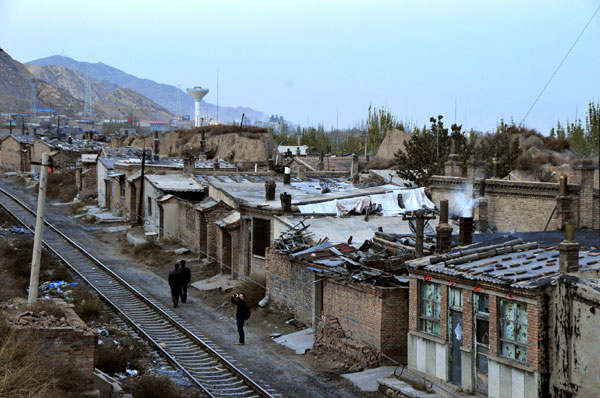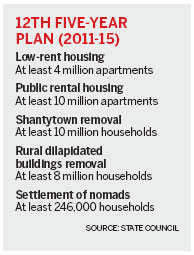Moving to the right side of the tracks
Improving the standard of living remains a top priority for central, local governments
The Slumdog Millionaire scenario only comes off on the big screen. Few of the low-income households living in the shabby, crowded and unhealthy shantytowns of Datong in Shanxi province, expect to become super-rich overnight.
 |
|
The shantytown alongside the Datong-Qinhuangdao Railway in Datong, Shanxi province. |
However, Ren Xinming and others like him do share one simple and sometimes longstanding dream: To have their own apartment; not necessarily a large place, just somewhere cozy and warm.
|
 |
It would be easy to mistake Ren's area for one that's been long deserted. The paint is peeling from the walls and trash is scattered all over the place. Only the barking of innumerable dogs hints that the dilapidated buildings are still inhabited.
A tour of around Ren's house emphasizes the bleakness and poverty of the place. Smoke from the stove turned the white paint on the interior walls black long ago, and a number of broken window panes have been replaced with plastic covering.
There is no heating and no toilet. Although the closest public bathroom is just a hundred meters away, it seems much further when the temperature drops as low as minus 10 C in winter.
Noise is another factor. Ren's house is situated next to the Datong-Qinhuangdao Railway. "We're pretty used to living with the noise of the trains, but the one that passes at 2 am always wakes us up," said Ren. "I've been worried about the kids' safety since they could walk."
Resource rich
Every year, the railway, China's largest transporter of coal, carries more than 400 million metric tons of the fuel from the resource-rich provinces of Shanxi and Shaanxi and the Inner Mongolia autonomous region to the port city of Qinhuangdao, where it is then shipped on to other coastal areas of the country.
Copyright 1995 - 2010 . All rights reserved. The content (including but not limited to text, photo, multimedia information, etc) published in this site belongs to China Daily Information Co (CDIC). Without written authorization from CDIC, such content shall not be republished or used in any form. Note: Browsers with 1024*768 or higher resolution are suggested for this site.

